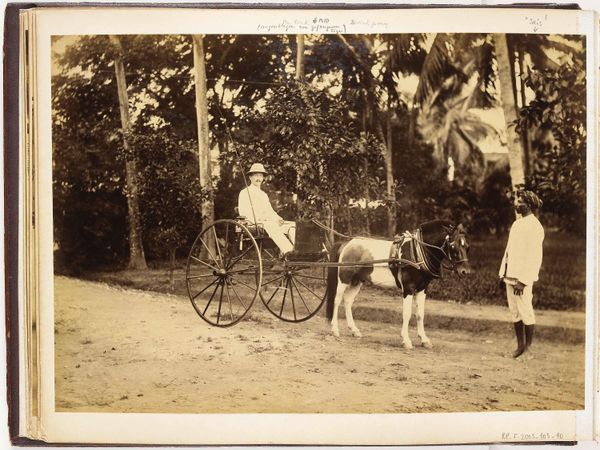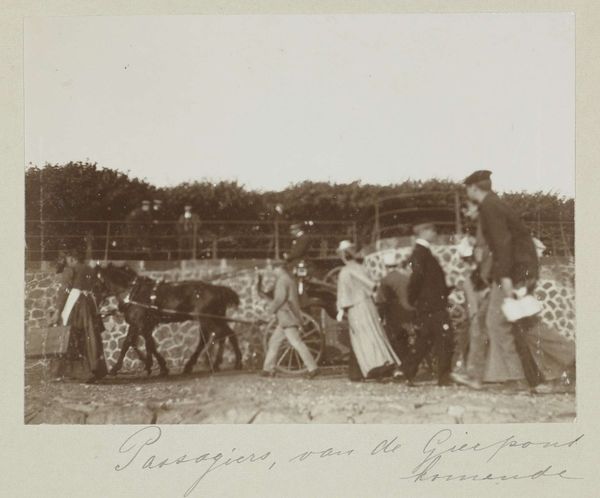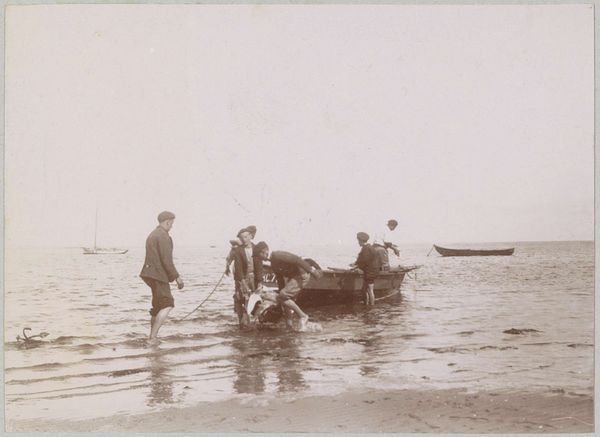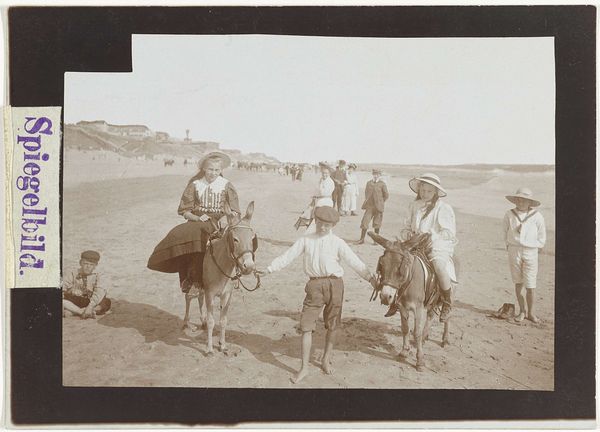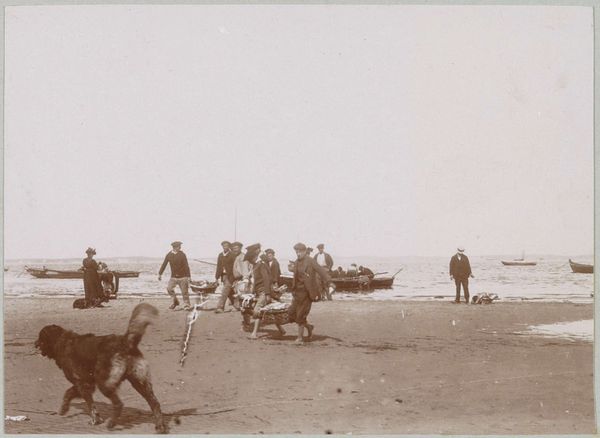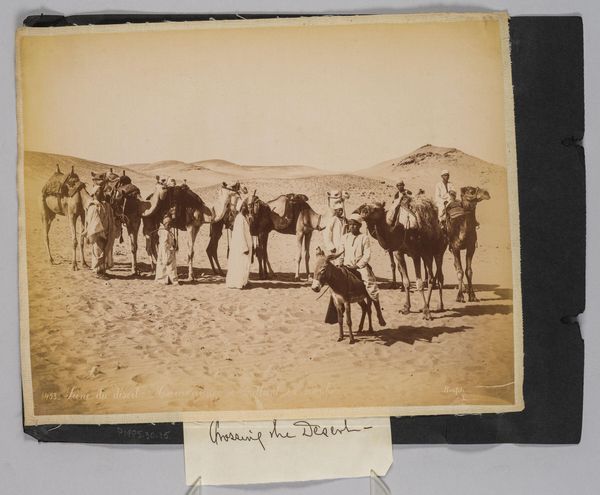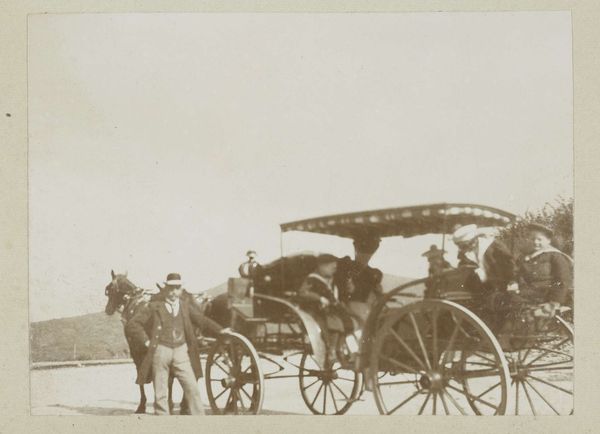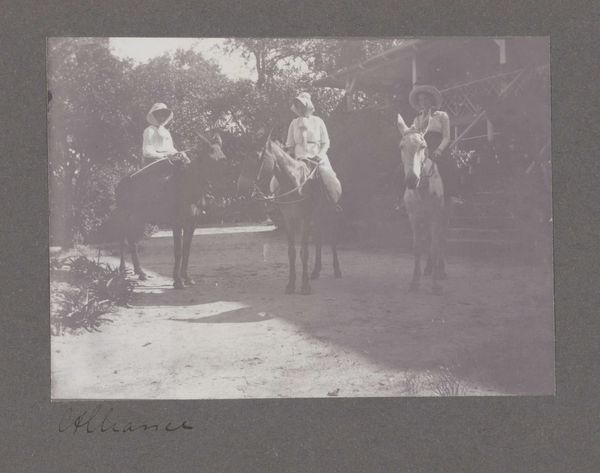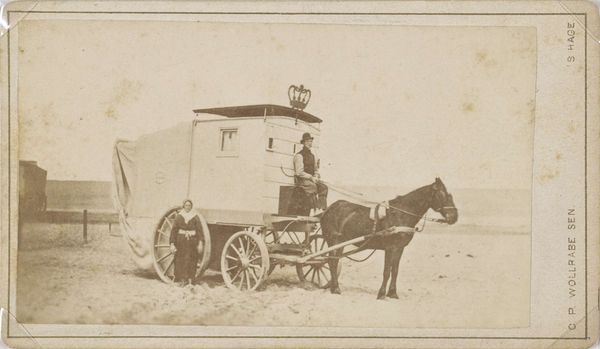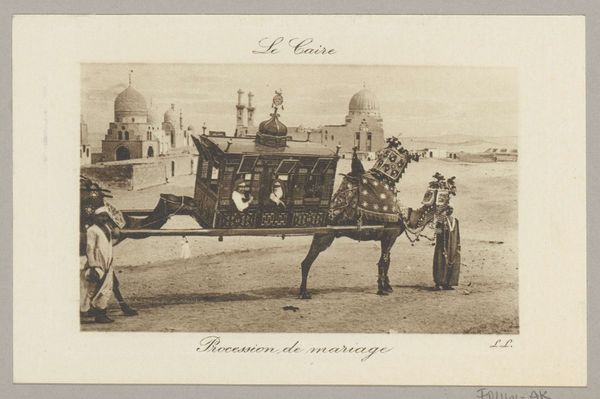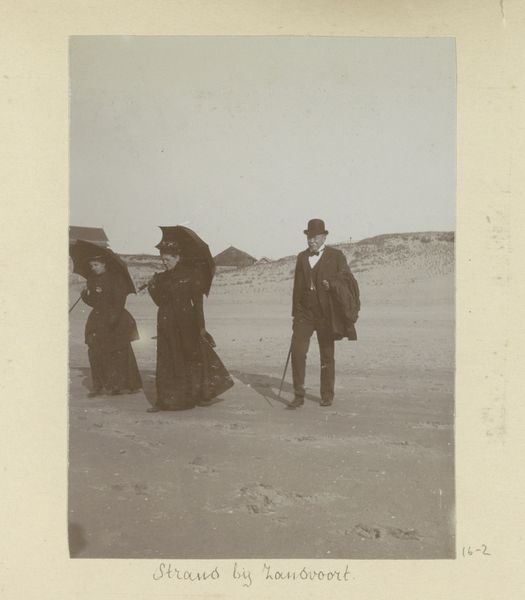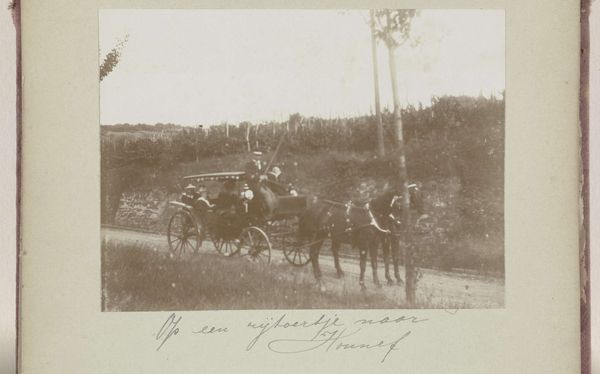
Wilhelmina, koningin der Nederlanden, en Juliana, koningin der Nederlanden, met een rijtuig op het strand te Scheveningen 1915 - 1925
0:00
0:00
print, photography, gelatin-silver-print
#
portrait
# print
#
landscape
#
archive photography
#
photography
#
historical photography
#
gelatin-silver-print
#
19th century
Dimensions: height 89 mm, width 136 mm
Copyright: Rijks Museum: Open Domain
Editor: Here we have a photograph, likely a gelatin-silver print, from between 1915 and 1925. It depicts Queen Wilhelmina and Princess Juliana with a carriage on the beach at Scheveningen. I’m struck by how posed and formal the image feels despite being at the seaside. What's your take on it? Curator: That formality speaks volumes. Consider the public role of the monarchy at the time. Royalty was very performative. Photographs like this were carefully constructed tools of statecraft, shaping the image of the royal family. What do you think it communicated to the public? Editor: I suppose it reinforces a sense of stability and perhaps approachability, even amidst potential social upheaval during and after the First World War. But were photographs like these always positively received? Curator: That's a very insightful question! Not necessarily. As photography became more widespread, it also democratized representation. Critiques of power, of the monarchy included, could now be visually circulated more easily. Were images like this intentionally constructed to counteract any potentially critical imagery? And who controlled the narrative of this kind of public image? Editor: That makes sense. So, a seemingly simple image of a royal family at the beach is actually laden with political intent. It's fascinating to consider the power dynamics at play in even the most casual-seeming depictions of the monarchy. I will never look at these archival photographs the same way again! Curator: Precisely! Understanding art and images in its historical context is fundamental to seeing all the subtleties that speak to how power functions within society.
Comments
No comments
Be the first to comment and join the conversation on the ultimate creative platform.

